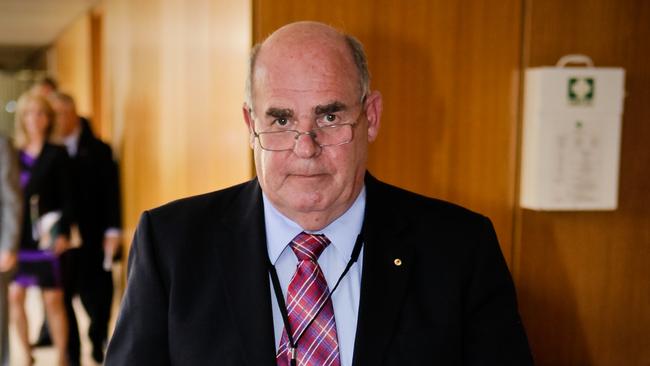Bushfires: Biggest need is boots on the ground, ex-fire chief says
Former NSW RFS commissioner Phil Koperberg said the emphasis must be on mitigating fire hazards through land management and prescribed burning.

Firefighters battling monster blazes up and down the nation’s eastern seaboard don’t need more trucks, water bombers or hoses, but they do need more volunteers to operate them, the founder of the NSW Rural Fire Service says.
As the nation embarks on a discussion about how to manage future fires, former NSW RFS commissioner Phil Koperberg said the emphasis must be on mitigating fire hazards through land management and prescribed burning.
Mr Koperberg said all the aerial bombers in the world couldn’t have contained the fires sweeping the south coast of NSW, such was their scale and intensity.
And he said the RFS commissioner, the police and the Premier had ample powers between them to manage people and properties in bushfire-stricken areas.
“Given the unique nature of the fire, they’re probably about as well equipped as they can be,’’ Mr Koperberg told The Australian.
“The government has not denied them anything. If there’s an issue at all, it’s the troops on the ground, the people on the end of the hose, they are getting fatigued. That’s when accidents happen.’’
Mr Koperberg said, if anything, more resources and forethought needed to go toward bushfire mitigation. He said all the major fire events of the past few decades shared a common theme: too much combustible vegetation on the ground.
He said the country needed to better manage fuel loads on the forest floor through a combination of prescribed burning and targeted land clearing.
And, as the urban frontier reached deep into the bush, people needed to examine our approach to town planning. “We need to take a holistic view,’’ he said.
Mr Koperberg’s view on resourcing was backed by former NSW fire chief Greg Mullins, who said the government needed to examine ways of incentivising RFS volunteers.
Mr Mullins said the current fire season was the direct result of climate change, which he said was “lengthening fire seasons, reducing rainfall and making everything more flammable’’.
“Hazard reduction is a significant factor but what’s happened is that the windows of hazard reduction have narrowed because of reduced rainfalls,” he told The Australian.
“There used to be months where we could do burn-offs.’’
Mr Mullins said the fires burning simultaneously across the country had made it harder for states to share assets, resources and people.
However, he said the main problem was not equipment, but the people needed to operate it. “The demographics are getting older and older. There’s a drift away from volunteering.’’
A spokesman for the NSW RFS said there were 653 vehicles and 101 aircraft fighting the fires. There were 1881 firefighters and 618 support personnel.
Referring to the hundreds of fire refugees waiting to be evacuated by the military, Mr Koperberg said authorities already possessed sufficient powers to manage fire-stricken communities.
The RFS had the authority to close roads, enter private properties and order the removal of fire hazards.
“The commissioner of the RFS at the moment has more power than Donald Trump,’’ he said.



To join the conversation, please log in. Don't have an account? Register
Join the conversation, you are commenting as Logout